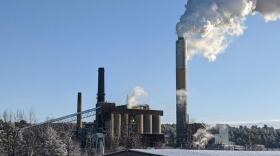Different types of phytoplankton will react differently to warming oceans and this can affect which marine species thrive in the region, according to a new study led by researchers in New England.
Phytoplankton — single-celled, diverse organisms that use carbon dioxide to produce oxygen — are the base of the food web for species like fish, whales, and lobster.
“Some phytoplankton will do better than others, which has implications for food webs,” said Stephanie Anderson, a postdoctoral fellow in marine microbial ecology at the Massachusetts Institute of Technology. Anderson and a team from the University of Rhode Island studied how phytoplankton communities are changing in warming waters.
Shifting phytoplankton communities will bring new marine species to New England, said Becca Selden, a marine ecologist who teaches at Wellesley College. Selden studies the impacts of climate change on fisheries and wasn’t involved in the study.
“If you imagine the food webs as this big pyramid, the bigger the base of your pyramid — which is the phytoplankton — the bigger the next level can be,” Selden said.
Larger phytoplankton thrive in cooler waters, sustaining larger animals all the way up the food chain. This is why whales live toward the poles, Anderson explained.
These shifts in temperatures and phytoplankton communities impact where other marine species live. “Populations of fish that used to be more common in Connecticut and Rhode Island are now more common in places like the Gulf of Maine,” Anderson said.
Recently, rising ocean temperatures have benefited the Maine lobster industry. “Some areas of the Gulf of Maine were too cold to support the biggest population growth rates for lobster. And now, with a little bit of warming, they're actually in their sweet spot,” Selden said. The Maine lobster industry has harvested record numbers of lobsters in recent years, she said, but continued warming will put the industry at risk.
Cold-water zooplankton, which eat phytoplankton, are a key food source for young lobster. Shifting phytoplankton could cause shifting zooplankton, Anderson said, and could limit lobsters’ food source.
The southern New England lobster fishery has dwindled, including in Connecticut, in part due to warming waters, Selden said.
One species that has followed warming waters from the Mid-Atlantic to New England is the black sea bass, which eats lobster, posing a threat to lobster fisheries, Selden said.
The impacts of phytoplankton on fish, lobster, and the economy aren’t the only reasons why the tiny organisms are worth watching. They take in carbon dioxide — which drives climate change — and produce oxygen, making them a key part of the battle to slow global warming.
With the understanding that some types of phytoplankton will benefit from warming waters and others will be harmed, Anderson plans to research how communities of phytoplankton — groups of organisms that live together — might change.
“We're going to be simulating competition with those different growth rates,” Anderson said, to explore what communities of phytoplankton might look like in the future.




